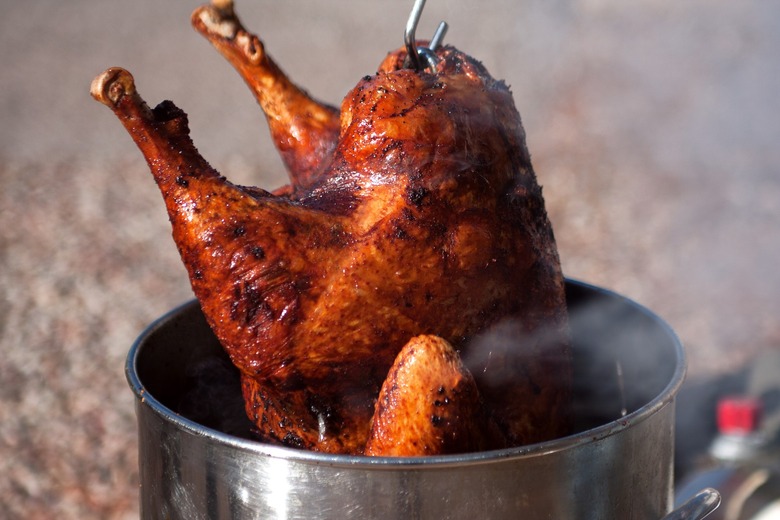How To Fry A Turkey
There are a lot of things you have to consider when buying and cooking a Thanksgiving turkey. And if you want to shake things up this holiday season, you may consider deep-frying your bird. But one quick Google search of this cooking method shows videos of blazing decks and warnings about how dangerous it can be. But if you follow a few cautionary tips, you can fry a turkey safely.
Should You Air-Fry, Oven-Roast or Deep-Fry Your Turkey?
According to the U.S. Department of Agriculture, you want to make sure that you work with a smaller turkey that is no larger than 12 pounds. You also want to ensure that your turkey is fresh or completely thawed if you bought one frozen. Not using a fresh or 100% thawed turkey is one of the biggest turkey cooking mistakes you can make. Ice and piping hot oil are not a good combo, so be sure you know how to thaw your turkey.
You also need a large enough vessel for frying your bird. Your turkey should be completely submerged and have about 1 or 2 inches of oil above it. You also want to make sure that the oil goes in your turkey cavity and is able to flow through the bird freely so it cooks all the way through.
When working with large amounts of oil and a metal cooking vessel, it's important that you cook outside and have plenty of space around your pot. Also use a sturdy, heavy pot and cooking vessel so it doesn't tip over.
When it's finally time to fry that turkey, heat your oil up to at least 350 degrees Fahrenheit and fry the turkey for about three to five minutes per pound. So a 12-pound turkey will take anywhere from 36 minutes to an hour. After about 40 minutes, pull your turkey out of the fryer and check that the thickest part of the thigh is at least 165 degrees using a meat thermometer. Then, let your turkey cool, carve into it and serve that deep-fried bird alongside some Southern-inspired Thanksgiving recipes.
